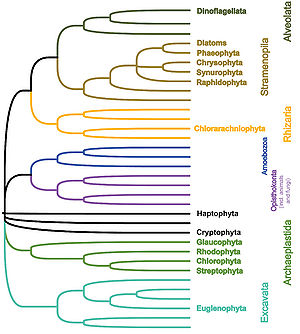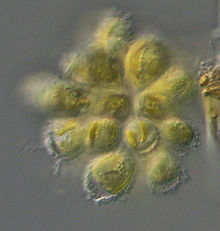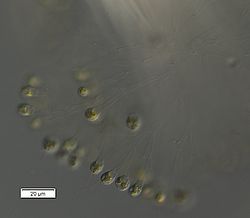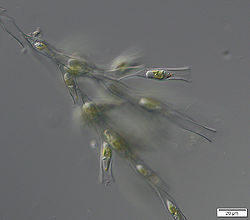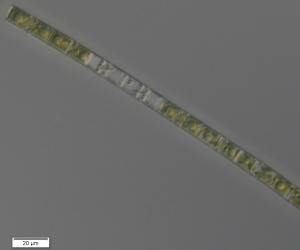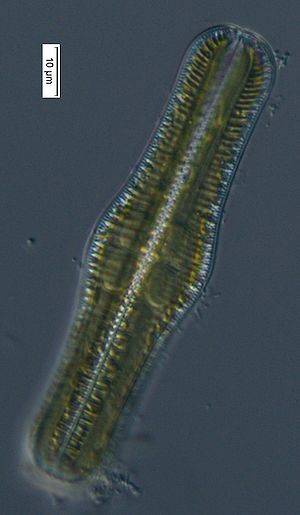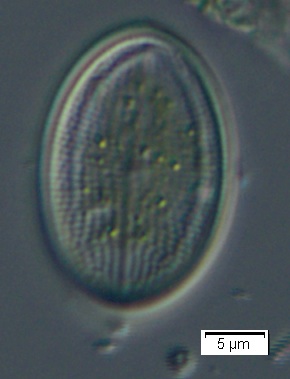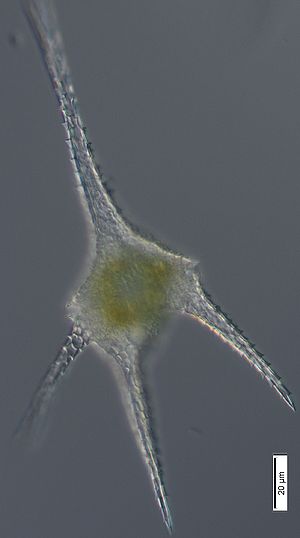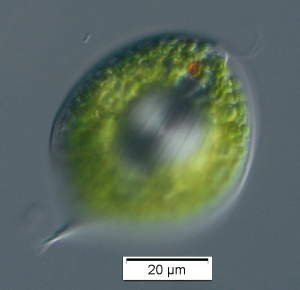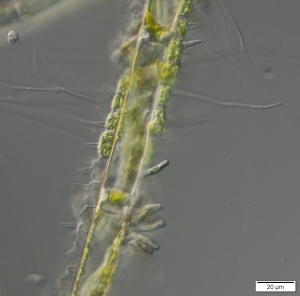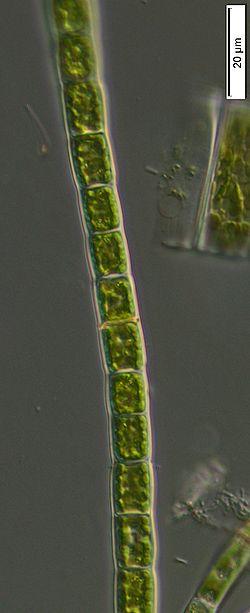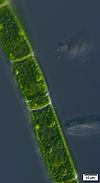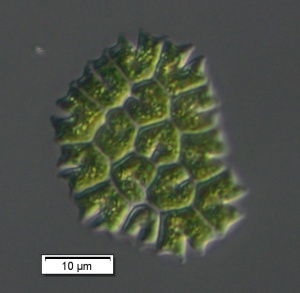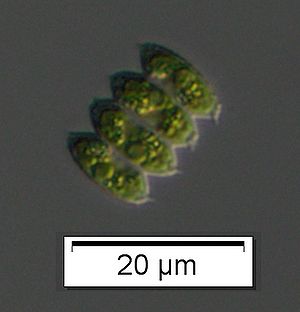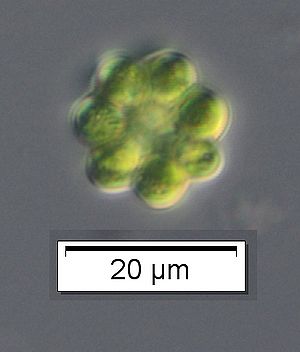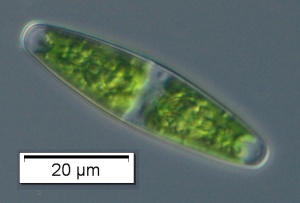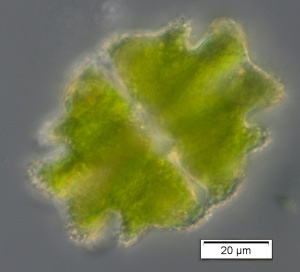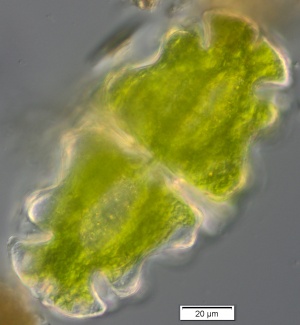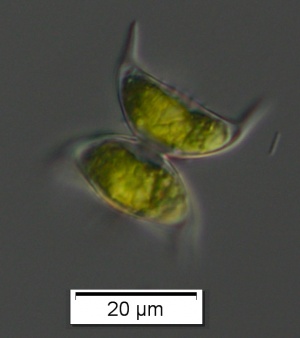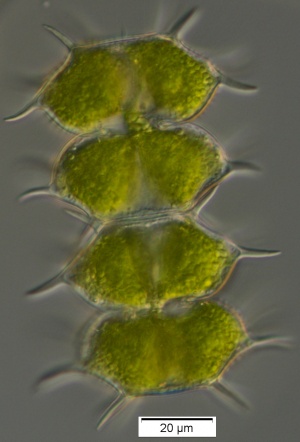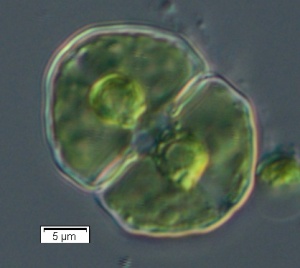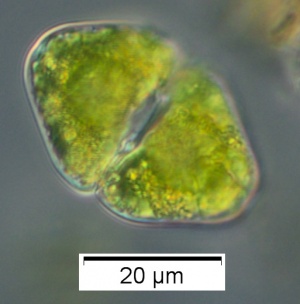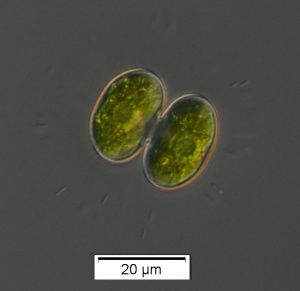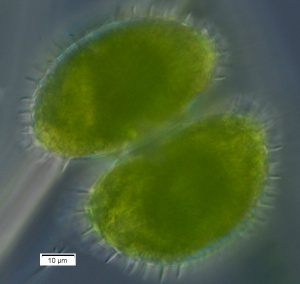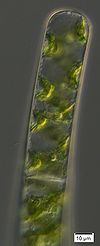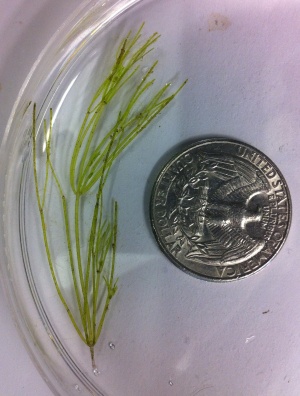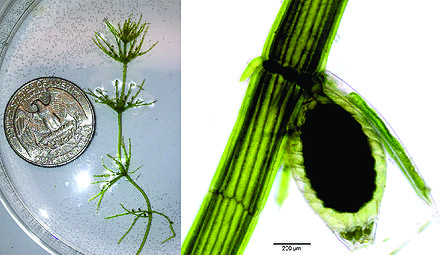Difference between revisions of "Algae around UConn"
| Line 64: | Line 64: | ||
{| | {| | ||
| − | | [[Image:Closterium_navicula.jpg|thumb|center|''Closterium navicula'' from pond on Forest Rd., Mansfield, CT]] || [[Image:Cosmarium_denticulatum.jpg|thumb|center|''Cosmarium denticulatum'' from pond on Forest Rd., Mansfield, CT]] || [[Image:Euastrum_verrucosum.jpg|thumb|center|''Euastrum verrucosum'' from pond on Forest Rd., Mansfield, CT]] || [[Image:Euastrum_oblongum.jpg|thumb|left|''Euastrum'' cf. ''oblongum'' from pond on Forest Rd., Mansfield, CT]] | + | | [[Image:Closterium_navicula.jpg|thumb|center|''Closterium navicula'' from pond on Forest Rd., Mansfield, CT]] || [[Image:Cosmarium_denticulatum.jpg|thumb|center|''Cosmarium denticulatum'' from pond on Forest Rd., Mansfield, CT]] || [[Image:Euastrum_verrucosum.jpg|thumb|center|''Euastrum verrucosum'' from pond on Forest Rd., Mansfield, CT]] || [[Image:Euastrum_oblongum.jpg|thumb|left|''Euastrum'' cf. ''oblongum'' from pond on Forest Rd., Mansfield, CT]] || [[Image:Staurodesmus_dejectus.jpg|thumb|center|''Staurodesmus dejectus'' from pond on Forest Rd., Mansfield, CT]] |
| − | [[Image:Staurodesmus_dejectus.jpg|thumb|center|''Staurodesmus dejectus'' from pond on Forest Rd., Mansfield, CT]] | + | |
|} | |} | ||
<br> | <br> | ||
{| | {| | ||
| − | | [[Image:Xanthidium_antilopaeum.jpg|thumb|center|''Xanthidium antilopaeum'' from pond on Forest Rd., Mansfield, CT]] || [[Image:Cosmarium1.jpg|thumb|right|''Cosmarium'' sp. from the EEB greenhouse, Storrs, CT]] || [[Image:Cosmarium_granatum.jpg|thumb|center|''Cosmarium granatum'' from pond on Forest Rd., Mansfield, CT]] || [[Image:Cosmarium_contractum.jpg|thumb|center|''Cosmarium contractum'' from pond on Forest Rd., Mansfield, CT]] | + | | [[Image:Xanthidium_antilopaeum.jpg|thumb|center|''Xanthidium antilopaeum'' from pond on Forest Rd., Mansfield, CT]] || [[Image:Cosmarium1.jpg|thumb|right|''Cosmarium'' sp. from the EEB greenhouse, Storrs, CT]] || [[Image:Cosmarium_granatum.jpg|thumb|center|''Cosmarium granatum'' from pond on Forest Rd., Mansfield, CT]] || [[Image:Cosmarium_contractum.jpg|thumb|center|''Cosmarium contractum'' from pond on Forest Rd., Mansfield, CT]] || [[Image:Staurastrum.jpg|thumb|left|''Staurastrum'' cf. ''hirsutum'' from stream by the Willington Pizza restaurant, Willington, CT]] |
|} | |} | ||
<br> | <br> | ||
| + | *The order Zygnematales contains commonly occurring ("weedy") filamentous taxa ''Zygnema'', ''Mougeotia'', and ''Spirogyra''.<br> | ||
{| | {| | ||
| − | | [[Image: | + | | [[Image:Spirogyra.jpg|100px|thumb|left|''Spirogyra'' sp. from stream by the Willington Pizza restaurant, Willington, CT]] |
|} | |} | ||
<br> | <br> | ||
| − | |||
| − | |||
*Not all algae are microscopic. Aside from the conspicuous marine seaweeds, several freshwater algae are also observable by the naked eye. The green algae of the class Charophyceae (stoneworts) can be found in many water bodies in the Northeast, but can be easily mistaken for aquatic plants. | *Not all algae are microscopic. Aside from the conspicuous marine seaweeds, several freshwater algae are also observable by the naked eye. The green algae of the class Charophyceae (stoneworts) can be found in many water bodies in the Northeast, but can be easily mistaken for aquatic plants. | ||
| − | [[Image:Nitella_flexilis.jpg|thumb|right|''Nitella flexilis'' from Walker Reservoir East, Vernon, CT]] | + | {| |
| − | [[Image:Chara_zeylanica.jpg|440px|thumb|center|''Chara zeylanica'' from the EEB greenhouse, Storrs, CT, and a closeup of its reproductive structure (oospore)]] | + | |
| + | | [[Image:Nitella_flexilis.jpg|thumb|right|''Nitella flexilis'' from Walker Reservoir East, Vernon, CT]] || [[Image:Chara_zeylanica.jpg|440px|thumb|center|''Chara zeylanica'' from the EEB greenhouse, Storrs, CT, and a closeup of its reproductive structure (oospore)]] | ||
| + | |} | ||
| + | <br> | ||
Revision as of 17:21, 25 June 2014
Contents
Microorganisms are incredibly diverse. A small sample of water from a local pond can contain dozens of species - some related to plants, some related to fungi, and some belonging to completely different, ancient lineages of eukaryotes (see simplified eukaryotic tree of life on the left). Algae are a subset of this diversity: they are organisms that contain a photosynthetic organelle (plastid). Here are a few examples of the charismatic algae found in the vicinity of the University of Connecticut.
Click here to see the map of localities sampled so far
Stramenopiles
Many microscopic and macroscopic algae belong to the group called Stramenopiles (also referred to as heterokonts). Diatoms, Chrysophytes, and Synurophytes are microscopic, and Phaeophytes (kelps, or brown algae) are mostly macroscopic and marine.
- Dinobryon is a colonial flagellated alga from the class Chrysophyceae. Another colonial chrysophyte is Uroglenopsis, also found in CT (Middle Bolton Lake).
- Synura is a genus of the Synurophyceae, a sister group to Chrysophyceae. Their plastids give members of both groups a typical golden-brown color. Synurophyceae have cells covered with siliceous scales. Detailed examination of scale morphology is often needed for species identification. Colonies of Synura are not the most elegant of swimmers, but are fun to watch tumbling around.
- Diatoms (Bacillariophyceae) are very common not only in freshwater habitats, but also in marine environments. They can be solitary cells or form chains or stalked colonies.
Dinoflagellates
Dinoflagellates are a group related to the Stramenopiles. Ceratium and Peridinium are common freshwater genera.
Euglenoids
Euglenoids are an ancient lineage most closely related to Kinetoplastida (best known for the parasite Trypanosoma). They acquired photosynthetic abilities by engulfing a green alga - and therefore they may superficially resemble one. Among the commonly occurring genera are Euglena and Phacus.
- Unlike green algae, which store energy in form of starch, euglenoids use a different carbohydrate, paramylon. The paramylon bodies are often large and of a white-ish, "shiny" appearance, like the one visible in the Phacus specimen below.
Green algae: Chlorophyta
- Some algae grow on plants or on other algae - epiphytically. Aphanochaete from the order Chaetophorales, is an example of a green filamentous alga growing on another green filamentous alga, Oedogonium (order Oedogoniales).
- Other free-living filamentous algae are Microspora, the branching Chaetophora, and the above mentioned Oedogonium.
- Green algae often produce swimming cells as part of their life cycles. As an example, a video of a swimming cell of Oedogonium can be found here.
- Some green algae form colonies with defined numbers of cells. Such colonies are called coenobia. Commonly found coenobial green algae are Pediastrum, Stauridium, Coelastrum, Desmodesmus, and Scenedesmus.
Green algae: Streptophyta
- The order desmidiales contains some of the most spectacular of algae. Many species of the crescent-shaped Closterium can be found in the Northeast, as well as Cosmarium, Staurastrum, Euastrum, Micrasterias, Xanthidium, and others.
- The order Zygnematales contains commonly occurring ("weedy") filamentous taxa Zygnema, Mougeotia, and Spirogyra.
- Not all algae are microscopic. Aside from the conspicuous marine seaweeds, several freshwater algae are also observable by the naked eye. The green algae of the class Charophyceae (stoneworts) can be found in many water bodies in the Northeast, but can be easily mistaken for aquatic plants.

